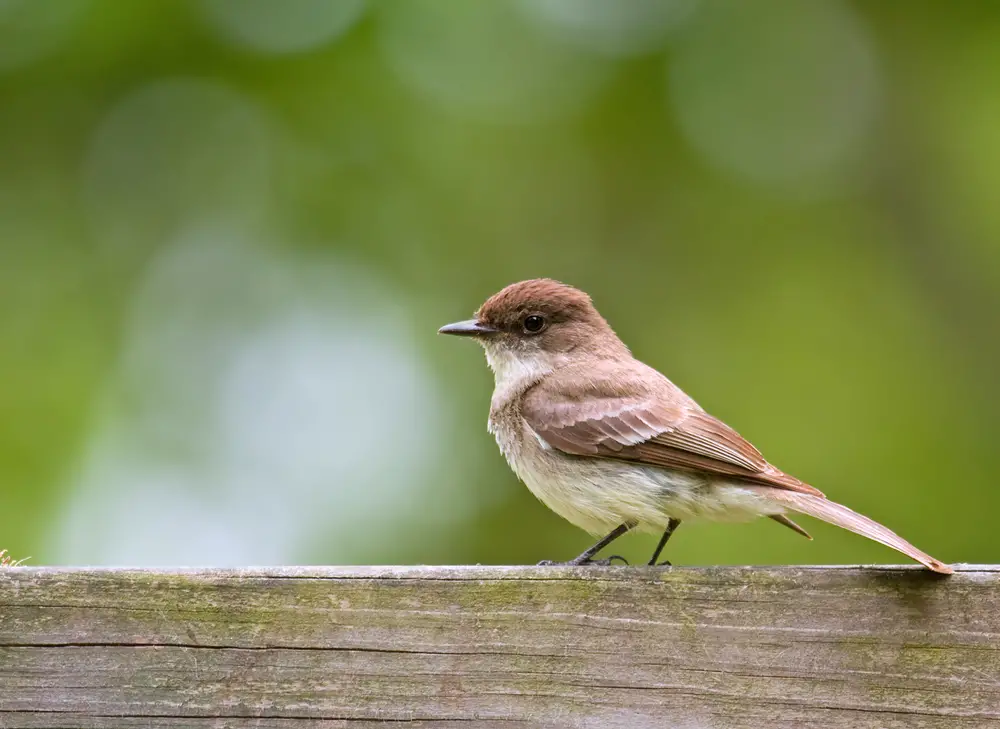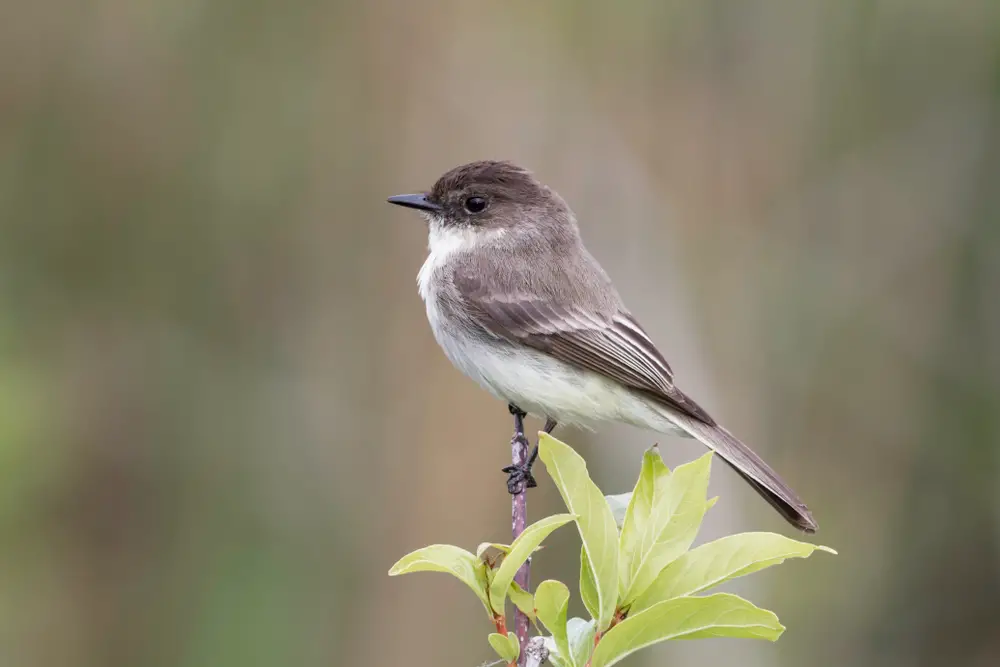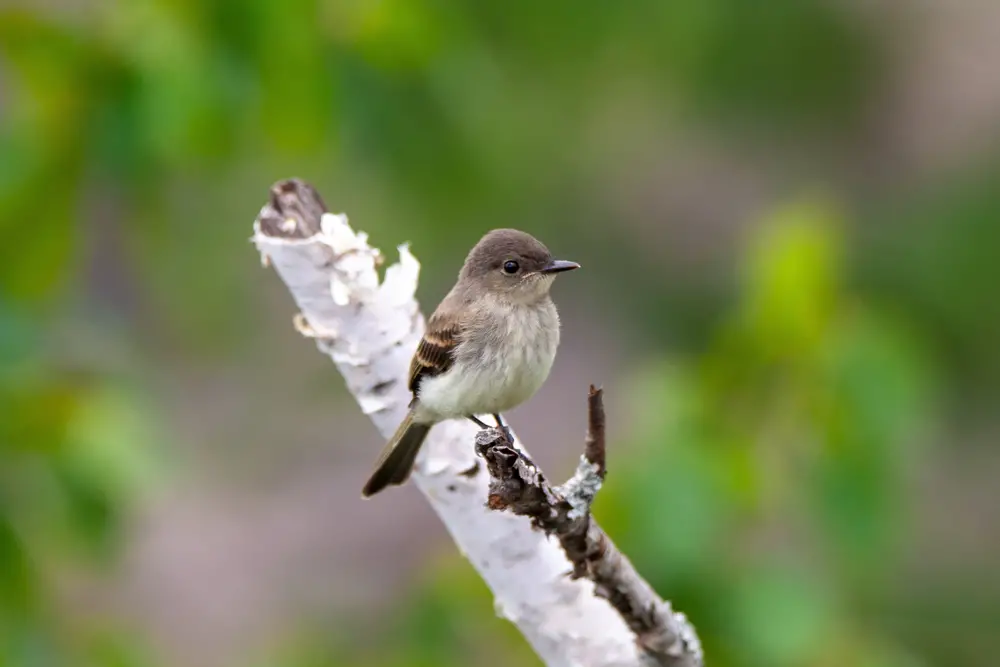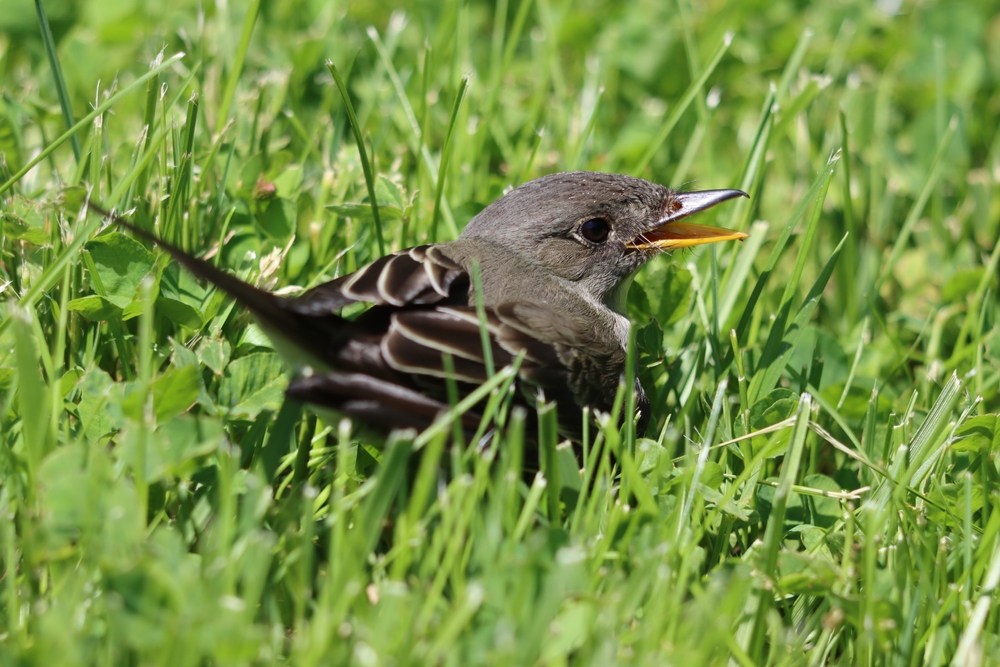Eastern phoebe is a neutral-colored songbird of medium size. They usually inhabit open woodlands, but you may find them among old buildings. They are a type of flycather, and the average lifespan of these fine birds is around 9 years.
If you’d like to get to join birdwatcher and find Eastern phoebe, you can check around bridges and old buildings for nests. Keep in mind these birds migrate, so you may not see any around during winter. Check out how to recognize Eastern phoebe below.
Is an Eastern Phoebe a Songbird?
Eastern phoebe (sayornis phoebe) from a family Tyrannidae, is a songbird with a medium-length tail, a bit larger than a tufted titmouse. Its head appears especially big compared to its body size. Phoebes also raise the feathers on their heads, so it looks like a peak. Still, they lack the eye ring and wing bars that many others have.
These birds are flycatchers, meaning they have short, thin bills they catch insects with. Their dark bills will help you distinguish them from other North American tyrant flycatchers. Eastern phoebes are brownish-gray on top with white underparts. They have a dusky wash on the sides of their breasts and dark upperparts on their heads.
Comparison to Similar North American Birds
If you’re not an expert birdwatcher, you may mistake the Eastern phoebe with a few other species. For example, the eastern wood pewees (contopus virens) are exceptionally similar to phoebes. However, it lacks the plumage buff hue and has more contrast on its wing bars.
Then you have the black phoebe, which basically looks like the same bird, only darker. If you inspect it further, you’ll notice black phoebes have slightly longer tails with white tips, narrower bodies, and longer wings. Additionally, Eastern phoebes don’t overlap with black ones.
If you rely on sounds, you may mistake the black-capped chickadee call for phoebes. However, the phoebes have quicker and raspier vocalization.

Eastern Phoebe Behavior, Diet, and Nesting
When it comes to behavior, these particular birds are quite active. Phoebes will make short flights catch insects, and return to perch. You may recognize them by their gentle tail wag and fee-bee song. However, they also make sharp “peep” vocalizations to call other birds.
They like small fruits and berries, and spiders, ticks, and millipedes are on their menu. However, usually, they’ll much the following insects they catch mid-air:
- Wasps
- Beetles
- Flies
- Bees
- Grasshoppers
Phoebe’s nest structure includes green moss and mud, hidden under eaves or ledges. Nests are often used for a second time during the breeding season, but some may build a new nest. This bird will lay from 3 to 7 pure white eggs. Incubation lasts about 16 days, afterwhich both parents will bring food for the nestlings. Eastern phoebes will raise about 2 broods annually.
Eastern phoebe songs are repeated many times and sound like phoe-bee/fee-bee. The second syllable alternates in high and low pitches. Their second song form sounds like a short chip.

What Is the Difference Between a Male and Female Eastern Phoebe?
Male and female Eastern phoebes look alike. Males are actually slightly larger and darker than females. Their length ranges from 5.5 to 6.7 inches, and they have a wingspan of 10.2 to 11.0 inches. Juvenile birds have weak wing bars and yellow bellies.
Where Do Eastern Phoebes Live?
Eastern phoebes like open woodlands, yards, parks, and woodland edges. They breed near buildings all around Eastern North America. Their range map includes Central America and Mexico, where they spend winter, but some may head too far north. Phoebes are among the earliest returning migrants in the spring.
Eastern phoebe’s call is one of the first signs the bird is back in the neighborhood. You may see them roam around quiet wooded areas. If you want to find Eastern phoebes, check old buildings and bridges, as their nests are likely hidden by overhangs.

How Long Do Eastern Phoebes Live?
This species became the first banded kind in the US in 1804. John James Audubon was the first to band the Eastern phoebe to track its movement. Today, the oldest known phoebe was 10 years and 4 months old. Experts caught and banded it in 1979 in Iowa, then saw it again in 1989 in Alberta. Some sources claim Eastern phoebes live 9 years on average.

